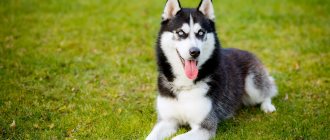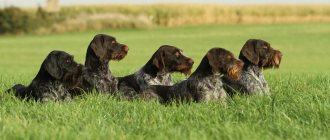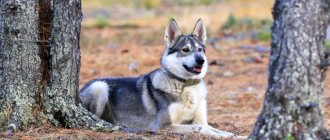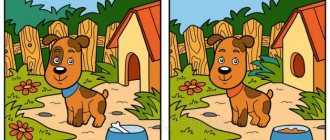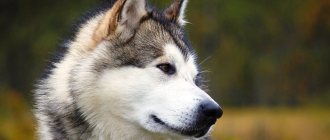03/18/2019 Drozd Nikolaevich Animals 5 There are many more people who love pets than those who have a negative attitude towards them. Many people dream of having an affectionate and graceful cat in their home, some are quite happy with silent, but such beautiful aquarium fish, others like smart dogs, endlessly devoted to their owner. These are what we will talk about today. But not about everyone, but about representatives of the most controversial breed, surrounded by a mass of rumors and speculation - the bull terrier.
Angry, aggressive, stubborn with a very unattractive appearance - this is how these animals are characterized by people who have never interacted with them. Kind and affectionate, intelligent and smart, completely devoid of aggression - this is what bull terrier owners say about their pets. What is the reason for such conflicting opinions? Maybe we are talking about different varieties of the breed? In fact, the reason for such a difference in estimates lies on the surface. Training a bull terrier in the past (and in the recent past) - for cruel fun - and in our days - for home keeping - is different.
The most common characteristic of this breed - unbridled aggression - is recognized by dog handlers as the most deceitful. It is difficult to find dogs that become so strongly attached to their owner. Their devotion knows no bounds; they are ready to defend his interests, even when entering into an unequal battle. Undoubtedly, sometimes dog anger occurs, but its manifestations concern only animals that are not socialized at an early age. Many novice dog breeders are interested in the Bull Terrier's attitude towards children. We will also talk about this in the article.
Historical reference
The Bull Terrier dog breed was developed in England. After the ban on bullfights (1835), people lost the exciting spectacle. Dog fighting and rat baiting began to develop. Such shows were usually held in small spaces. The bulldogs used in fights were too heavy and clumsy. In this regard, the idea was born to breed more nimble animals. The breeders chose agile terriers.
The founder of the breed was James Hinks. In 1862, he succeeded in breeding the ideal bull terrier by crossing a bulldog, a white English terrier and, presumably, a Dalmatian.
Bull Terrier breed standard
FCI standard No. 11, registered on July 5, 2011, does not limit the weight and height of animals. At the same time, the dog should look powerful for its size and correspond to its type and gender. The average weight of females is about 18 kg, males - 36, with a height at the withers from 30 to 61 cm, respectively.
The standard classic English Bull Terrier is a muscular, medium-sized dog with a strong, athletic body. Flexible when moving, light when running. The sternum is deep and wide, with prominent ribs. It is located closer to the floor than the stomach. The back is strong and wide. The tail is short, tapering towards the end. The long head is set low. It is shaped like an egg.
Narrow triangular eyes are set obliquely and deeply. They are farther away from the nose than from the middle of the top of the head. According to the standard, the Bull Terrier must have dark brown eyes. Light eyes are a disqualifying factor.
The nose is slightly downturned, with open nostrils. The teeth are white, scissor bite. The lower jaw is especially powerful. Thin small ears are set close. The forelimbs are powerful. They are better developed than the hind ones. Consist of round, strong bones. The toes are compact and mobile.
Coat and color
The coat is straight, short and quite hard to the touch, with a noticeable shine. Therefore, keeping a bull terrier in an apartment is allowed. Shedding occurs twice a year, but with proper care (combing) it does not cause too many problems for owners. In winter, a soft undercoat appears.
The color of the Bull Terrier can be classic white or colored. In white dogs, colored pigmentation of the skin is allowed, almost invisible through the fur. In colored animals, the primary color should predominate.
Clothes for mini bull terrier
For the cold off-season and winter, it is worth purchasing a couple of sets or overalls for walking. They are especially needed by the small bull terrier, whose immune system is still developing and whose susceptibility to seasonal infections remains high. The outer fabric should be dense and waterproof, made from raincoat materials. Fleece, padding polyester or holofiber can be used as insulation. As a rule, specialized stores have everything you need, but if desired, clothes can be sewn to order.
Bull Terrier decorative
The mini bull terrier looks very much like its “big brother”. However, it is much smaller in size and has a distinctive character. This is a great companion that is suitable for keeping even in small apartments. However, it should be remembered that such a dog loves long walks.
Mini Bull Terriers began to be bred in Great Britain in the 19th century. For this purpose, dwarf puppies were selected, born from the mating of standard dogs. They were raised not for dog fighting, but for catching rats, which were abundant in the houses and streets of old London. In the breeding of mini-bull terriers, in order to consolidate the small size of the animals, Jack Russell terriers and fox terriers were used.
The height of small representatives of the breed does not exceed 35.5 centimeters. There are no restrictions on weight, as with standard animals, but it must correspond to height. A torso that is too fat or too thin is undesirable.
When a miniature bull terrier is in motion, it is striking how harmoniously and firmly built it is. These dogs also have coarse and short hair. The standard allows the following colors: white with spots on the head, red, brindle with a predominant black, tricolor, fawn. If you are wondering which dog to choose for your child, then, of course, a mini bull terrier will do.
Cage for mini bull terrier
Many dog breeders decide to purchase a crate for their pet, and this applies not only to fighting breeds. Every time the owner leaves the dog at home alone, he is afraid to return and see the apartment destroyed, and this is not uncommon, because bull terriers cannot stand loneliness. In addition, if you accustom a puppy to it from the very beginning, the dog will perceive it as his home, where he can relax, play with his favorite toy, and simply hide from prying eyes.
The mini bull terrier girl will stay here with the puppies when she becomes a mother. The cage can be plastic, metal or made of durable fabric. The size should be such that the dog can easily stand up, turn around and change position in it. However, you should not leave your pet in a cage for a long time and use it as a means of punishment. The dog should perceive it as a refuge, his personal space.
Character traits
To understand how to raise a Bull Terrier puppy, you should learn more about its character and highlight the following qualities:
- agility of a terrier;
- bulldog grip;
- bravery;
- endurance;
- low pain threshold;
- unquestioning obedience to the owner;
- desire to win;
- intelligence;
- reverent attitude towards children.
The main feature of these dogs, according to the standard, is calmness. With proper upbringing, a puppy will grow into an obedient and disciplined dog, although it should be borne in mind that your pet will regularly try to expand its permitted boundaries.
People who have no experience in dog breeding, are unsure of themselves, or are limited in time should avoid buying a puppy of this breed. An uncontrollable, angry bull terrier can grow up in nervous people who do not pay attention to the early socialization and upbringing of the puppy.
The Bull Terrier needs long walks. They must last at least an hour. This will help your pet release excess energy. Otherwise, negative changes may occur in the dog’s character: it will begin to respond less accurately to commands, will spoil things, and show self-will.
Experts call another feature of the bull terrier’s character an irrepressible passion for bullying and chasing other dogs, which often happens on walks. Therefore, walking should be carried out on a leash, and by a person capable of holding an active dog. A child with a bull terrier should not be allowed outside: it will be difficult for him to cope with its power and grip.
If there are other animals living in the house, then it is necessary to accustom the dog to the fact that they occupy a higher position in the family hierarchy. Otherwise, bullying cannot be avoided. To raise an obedient and manageable animal, it is necessary to carry out social adaptation as early as possible: your pet should be introduced to new people, other animals, and visit different, including crowded, places.
At the slightest manifestation of aggression, the dog is made to understand that its behavior is unacceptable. In this case, shouting and physical punishment are excluded. These dogs are smart and quick-witted. Sometimes they show stubbornness, but with proper upbringing they demonstrate unconditional obedience. Bull Terriers have excellent athletic form, and therefore become excellent partners in morning jogging.
Some may be surprised, but powerful and strong bull terriers really need affection and care: they quickly and very strongly become attached to their owner. His long absence is very difficult to bear. Dogs become embittered, nervous, disobedient and stubborn. With proper care and upbringing, they become devoted family members and loyal protectors.
Bull Terrier and children
Despite his terrifying appearance, this dog is a wonderful family man. Therefore, if you are interested in what breed of dog to choose for your child, pay attention to the bull terrier. Once inside the house, the desperate fighter turns into a plush toy, which, curled up comfortably, sleeps under his favorite blanket, snoring sweetly. Judging by the reviews, the bull terrier and children are an inseparable company, capable of having fun all day long until the parents disperse the naughty ones.
Interestingly, representatives of this breed often get along better with small owners than their parents. If you have children and are planning to have such a four-legged friend, you should know that there will be another child in your house. A bull terrier needs to devote a lot of time and effort. Weigh the pros and cons of such a decision carefully so as not to regret it. The relationship between a bull terrier and a child will be the way you build it. The dog should be taught that the child is not the last in your “pack”. The last place should be the dog. But this place should be shown not by shouting and kicking, but by proper education. It is equally important to teach your child how to communicate with animals. It shouldn't be familiar. The Bull Terrier is a dog with self-esteem and therefore requires respect.
Diet of miniature bull terriers
The owner chooses what type of feeding to use for the pet independently, based on free time and financial situation. Four-legged animals can eat both natural food and ready-made store-bought food. Many owners choose the second option, since they do not need to spend time on cooking and selecting a diet.
Natural food should be balanced and include all the necessary vitamins and minerals. The basis of nutrition is lean meat. Cereals follow. In third place are vegetables and vegetable oil. You can supplement your diet with sea fish, dairy products, fruits, and eggs.
Having chosen a natural type of food, you need to give your pet vitamin complexes. The selection of the remedy should be carried out by a veterinarian. Tendons and cartilage are beneficial for dogs because they help clean plaque from teeth. Chicken meat and offal should be treated with caution, as allergies may occur to them.
Some products should be strictly prohibited:
- Smoked meats;
- Sweets;
- River fish;
- Potato;
- Spices;
- Sausages.
Feeding at the same time disciplines the dog. Meals are taken after walking, since the body needs to rest after eating. Discourage begging. You can give your pet a carrot to snack on, but not another portion of food.
Since minibulls are prone to obesity, you should not overfeed them. Babies under 1 month of age feed exclusively on mother's milk. From 2 to 7 months, puppies are fed 4-5 times a day. Then they are transferred to three meals a day. From 1 year of age, animals need to be fed once a day.
Human food can become real poison for boules. There have been recorded cases where eating chocolate led to the death of a pet. The dog should always have access to clean water. Four-legged animals on artificial food drink much more often than those eating natural food.
Choosing a puppy
It is very important to know how to choose the right bull terrier puppy. This breed is widespread in our country, so there will be no problems with choosing a nursery or a responsible breeder even in small towns. You shouldn’t buy a baby at a poultry market, not because they might sell you a puppy of a different breed: thanks to its unusual appearance, it’s almost impossible to make a mistake. But there is no guarantee that the purchased dog will be healthy.
When buying a puppy from a breeder or kennel, pay attention to the conditions in which the animals are kept. The room should be dry, moderately warm, and there should be no unpleasant odors. A healthy puppy is cheerful and active. He enjoys playing with humans and his relatives, and is not afraid of sharp sounds.
How to choose a puppy
Due to the fact that this breed arose through selective breeding, Miniature Bull Terriers are very sickly dogs. Most often they suffer from the kidneys, heart, and ears. Moreover, white animals get sick more often than any other. Therefore, white miniature bull terrier puppies are 3 times cheaper than darker ones. When choosing, the breeder should provide you with this information.
Look at the baby's behavior. If he is healthy, he will behave actively, playfully, and inquisitively. His eyes should be clean and clear. The health of a puppy can be determined by the condition of its coat. Smooth and shiny indicates that the puppy is healthy. Dull fur suggests otherwise. You can look at the parents of a miniature bull terrier live or from a photo to determine their physical qualities and heredity
Note! The breeder must provide you with a veterinarian's vaccination card and a photocopy of the pedigree.
Raising a baby
A puppy of this breed, bred for dog fighting, as soon as it appears in the house, can try to dominate and set its own rules. If disobedience is not stopped, then the owner will have to forget about the role of leader in the future forever. A person who is soft in character and unable to cope with emotions should not have such a dog. Nervousness, breakdown, screaming will become a signal for the animal about the weakness of the owner, and he will immediately lose his leadership position.
How to train a bull terrier? It is important to be consistent in parenting, to show patience and perseverance. Rules of behavior must be established once, not changed and strictly observed. The main ones include:
- Determining a place to sleep, eat and rest. Categorical suppression of the animal’s attempts to sleep in the owner’s bed, since the best and most comfortable sleeping place should belong to the leader.
- A puppy is prohibited from showing aggression near his bowl: if at a young age such behavior causes affection, then it is important to remember how this can turn out with an adult dog when a child, for example, ends up next to the bowl.
- If signs of aggression or dissatisfaction appear, the puppy is strictly reprimanded and pointed to his bed.
- Do not allow the dog to be present at the owners’ dinner, much less receive food from the table. They feed her last.
- The puppy’s toys are also the property of the owner; determining the time to play with them is also the prerogative of the owner. The puppy should not react aggressively to an attempt to pick them up. If the dog is not intended for official purposes, then you should not pull the toy with him: if the dog does not give it back, shake your pet by the scruff of the neck and scold him. When the dog spits it out, the animal is taken away and only after that the toy is picked up. This trick is difficult to do with an adult bull terrier. In this case, they resort to using a leash and a strict collar or wait until he spits out the toy himself. It is then picked up and put away forever. Only the owner should determine how much, with what and when his four-legged friend will play.
- The same can be said about caresses. If a dog forces you to pet it frequently while its owner is busy doing something, this indicates an attempt at dominance. In this case, the “Lie down” command is considered the best option. After that, continue with your business.
- Bull Terriers treat strangers calmly. If the owner himself does not bait the puppy, then he usually shows restrained curiosity. It’s another matter if there is a struggle for leadership between a person and a puppy: the animal should be made to understand: it is the owner’s right to determine the target for attack.
- If the bull terrier behaves inappropriately, they are taken to another room. Don’t forget about the little things: when walking and going down stairs, the dog should walk next to the person, and not in front. In the event of a collision at the threshold, the dog must retreat.
Training
Training begins a little later than education. An animal needs time to adapt to a new home; it needs to learn the rules of behavior in it. How to train a bull terrier? If the dog is not intended for protective or service activities, then it is quite possible to limit yourself to a set of basic commands: “Near”, “Come to me”, “Give”, “No”, “Sit”. They will make walking easier and safer.
If the dog masters the commands “Place” and “Lie down”, it will be easier to live together in the house or visit friends. Together with the instructor, it is necessary to work out situations where it is forbidden to take treats from someone else’s hands, pick up garbage from the ground, and not react to sudden extraneous noise.
Spend as much time as possible on your pet's physical training. With a lack of exercise, bull terriers begin to look for an outlet for their energy, which can upset the owner. Your pet's character may deteriorate. Another extreme is that when a pet is lazy, it gains excess weight, which negatively affects the animal’s health.
Bull Terriers are trained more carefully for exhibitions. They must move calmly during the demonstration and stand and allow their teeth to be examined. They are accustomed to large crowds of people and being transported in a cage.
Mini Bull Terrier - diseases
There are pathologies that dogs of this breed are susceptible to.
- Anatomical deviations are rare, but deafness was previously considered the scourge of bull terriers. However, thanks to tests for genetic diseases, this disease was almost completely eradicated.
- Another hereditary pathology that affects miniature bull terrier puppies is lens luxation. Because of it, the dog may lose vision in old age.
- Allergy is another common disease, but practice has shown that this only applies to albinos. Ordinary white bull terriers do not suffer from it.
Choosing a muzzle
As a rule, this accessory is made to order or selected individually. This is explained by the structural features of the muzzle. This issue must be approached responsibly: there are cases when, during a collision between two bull terriers, one of the dogs freed himself from the muzzle.
Your pet must be accustomed to this accessory from an early age so that problems with adaptation do not arise in the future. To do this, a treat is placed inside the muzzle. Thus, by gradually increasing the time spent in the muzzle, the dog is accustomed to the accessory. As the animal grows, it is changed in accordance with the parameters of the animal. It is important to be understanding of the people around you who are wary of a fairly large pet that does not have the proper “outfit”: a stranger cannot know what kind of character someone else’s large dog has.
Owner reviews
Most owners who have bull terriers in their homes are satisfied with their companions. However, they advise those who are just planning to have such a pet to pay great attention to its early socialization and upbringing - the character of the Bull Terrier in the future depends on this. If there is a child in your family, then you don’t have to worry about his safety: these dogs are very kind and gentle towards children. True, you should be careful with very young children: a powerful dog can accidentally push the child. At the same time, he will never show aggression towards him. However, in this case it is more advisable to get a mini bull terrier.
Source: fb.ru
Caring for Miniature Bull Terriers
The animals are very clean. Since their coat is short, grooming is not required. Caring for pets requires minimal effort. The baby should be taught hygiene procedures from childhood. Since dogs' bodies are sensitive to low and high temperatures, in winter they need to be dressed in special clothing.
You should brush your pet once a week with a stiff brush. This will help stimulate blood circulation and also get rid of loose hairs and dust. You can bathe them as needed, but not too often. Wipe contaminated areas with a damp towel.
During active physical activity, the claws wear down on their own. However, if your lifestyle does not include long walks on the asphalt, it is better to purchase a nail clipper and trim overgrown claws once a month. Once a week, animals need to brush their teeth with a special paste and a brush in the form of a finger attachment.
Important fact: The ears are wiped with a cotton pad soaked in hydrogen peroxide. The procedure is carried out once a week. The ears should be examined for inflammation. Once a month, you can instill prophylactic drops to protect your ears from dirt and infection.
Once a quarter, your pet must be treated for fleas and ticks and dewormed. The procedure must be carried out regularly. It is better to arrange a place for your pet to rest away from drafts and heating devices. Babies are toilet trained using absorbent diapers. Before the first vaccination, children should not be allowed outside.
You should not bed train your pet if you do not plan to let him into the bed in the future. The same goes for meals. You need to feed the animal separately at certain times and not allow it to the table during family lunches and dinners.


